Today’s post is from our guest, Laura DiBiase. You can learn more about Laura in her author profile below the article.
As someone who has built a career in digital marketing, I am almost ashamed to admit how effective my own craft can be used against me to enable or justify my online shopping problem.
Promotions with the subject line reading “Special discount code just for you”? Nine items in my shopping cart.
Instagram Ad for a 24 hour flash sale? Proceed to check out.
My favorite influencer preaching that this new product is going to change my life? Shut up and take my money.
While digital businesses have grown exponentially thanks to culpable consumers like me, the fitness market vertical within e-commerce has surged from nonexistent to a market powerhouse in less than a decade.
The fascinating facet of these fitness-related companies is that many of them have achieved incredible success by strictly offering their products or services through e-commerce channels.
In less than ten years, some of the leading e-commerce based companies have achieved so much success that they have become as recognizable as big-name labels like Nike or Adidas. Although some of them have eventually extended their reach into brick and mortar locations, the majority have maintained their primary revenue channel through online sales.
In the United States alone, digital fitness climbed to $3.46 billion in revenue in 2018. Projections indicate these figures will climb 4.3% annually to reach $4.1 billion by 2022.
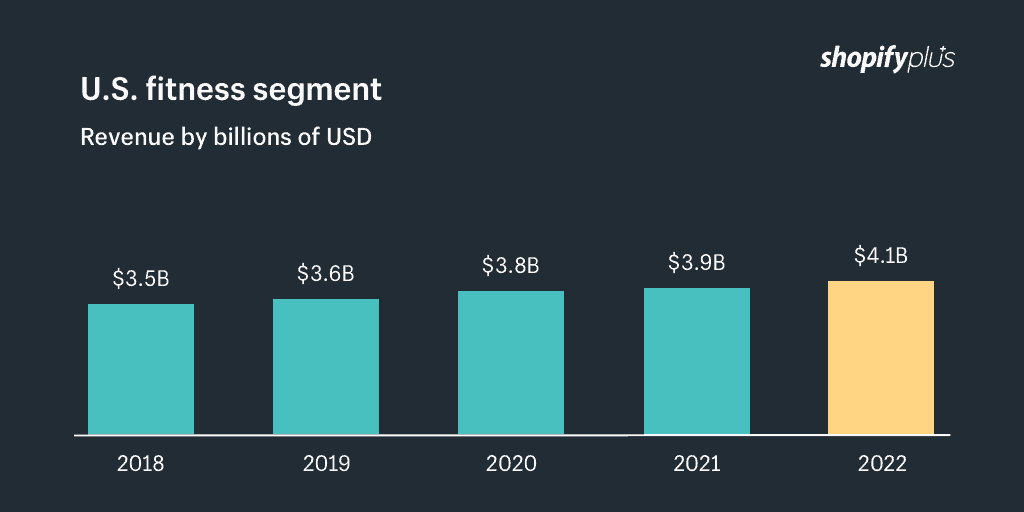
E-commerce based fitness companies have brilliantly capitalized off the power of social media platforms, brandings, and digital convenience to create a dynamic new marketplace ripe with earning potential.
Right Industry, Right Time, Right Strategy
It’s no secret that the fitness industry as a whole is burning hot right now. The global industry itself has exhibited 2.6% growth annually since 2015, climbing to 87.5 billion dollars in revenue in 2018. With over 162 million health club attendees worldwide, the prospective international audience holds a wealth of potential for companies within the fitness sphere to thrive.
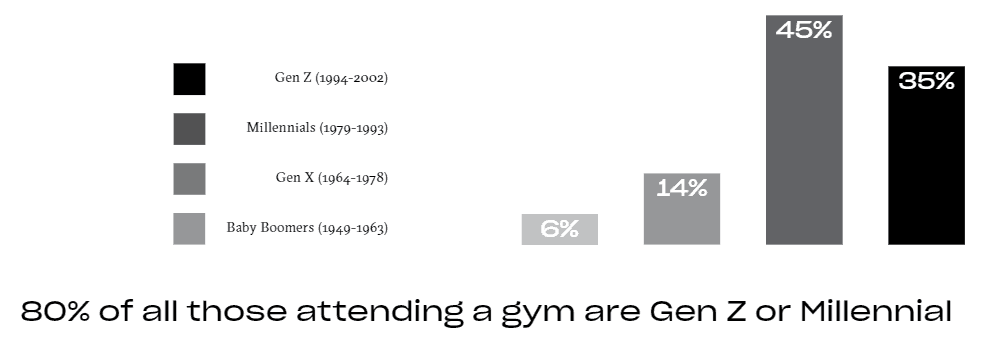
When you drill down, the generation leading this wave are millennials (a.k.a. me) and younger. Studies indicate that 81% of millennials exercise regularly or would like to compared to 61% of the Boomer generation. This also speaks to how millennials are driving the changes in the fitness industry, like the rise of boutique studios and fit-tech like wearables.
Working in tandem with fitness industry’s worldwide public interest, the internet world has exacerbated its popularity to new extremes. Social media has taken fitness’s thriving commercial success and generated a full-scale culture comprised of millions of loyal engaged followers. This community thrives on sharing their own health and wellness content or re-syndicating others for inspiration.
This hyper-connective environment that has pushed fitness to its elite status is equally responsible for the international boom of e-commerce based businesses.
Why Ecommerce Works
As a business owner, the-commerce based model offers a wealth of benefits, especially for new companies breaking into a saturated market. The Amazon revolution paired with consumer codependence of the world wide web for…well, everything, has created the ideal environment for internet-based companies to prosper.
Start up costs are relatively low and operations continue to be cost efficient without the financial burden of rent, management and upkeep needed for brick and mortar models. Without the geographical restrictions of a traditional store, digital companies boast a worldwide customer pool instead of a regionalized one.
Even the more complex aspects of e-commerce business have been dramatically simplified, like digital payments and shipping. By removing the option to pay with cash, ordering purchases online streamlines payments processes, which can be difficult to manage properly.
Similarly, shipping costs and procedures have been greatly eased by modern technology. There is no shortage of shipping methods or strategies at their disposal to maximize profit or appeal to customers. In fact, many e-commerce companies have cleverly merged logistics with branding by incorporating custom packaging, which adds perceived value and a little class to their brand’s image.
E-commerce: Fit for Fitness?
However, the inherent risks that accompany strictly e-commerce businesses are not to be ignored, especially in regards to the fitness realm. Customers may be wary to trust products, especially at higher prices, without inspecting quality firsthand.
This central characteristic of e-commerce business begs the obvious question: given the nature of fitness products, why purchase online vs. in-person?
The notion is almost counterintuitive: Why would anyone buy skin-tight leggings, sports bras and spandex universally known for fitting different body types inconsistently before trying them on in person?
Why would anyone opt to buy a specific nutritional supplements online with shipping costs instead of buying locally?
How can a company convince new customers that its products are superior to anything they could sample in-person from a health and nutrition store?
Transition to E-Commerce led by Fitness Clubs
Fitness clubs paved the way for the e-commerce fitness boom when they began selling their products online.
When gym attendance surged, fitness clubs capitalized off additional revenue opportunities by offering popular products for purchase at the front desk. Seeing the success of point of sales revenue, many clubs strayed away from offering only protein shakes and healthy snacks to include more sophisticated and versatile options.
In fact, many gyms expanded their secondary spend opportunities to include products from partnering labels or even designed their own, like gym-branded high-quality apparel or accessories.
Seeing as software for gyms is now typically intricate enough to provide an integration for an e-commerce platform, the transition to the online market is relatively easy to achieve. This dual revenue channel is not only great for profit’s sake, but it doubles as expanded opportunities for branding by having their satisfied customers happily sport their apparel outside of the gym.
For example, one of the most popular boutique clubs, Orangetheory, further boosted their brand by producing trendy, high-end workout apparel and accessories through their e-commerce channel.
The line is characterized by the brands traditional colors, orange (duh), black and charcoal, and is durable enough to be worn comfortably during their infamous high-energy circuit routines.

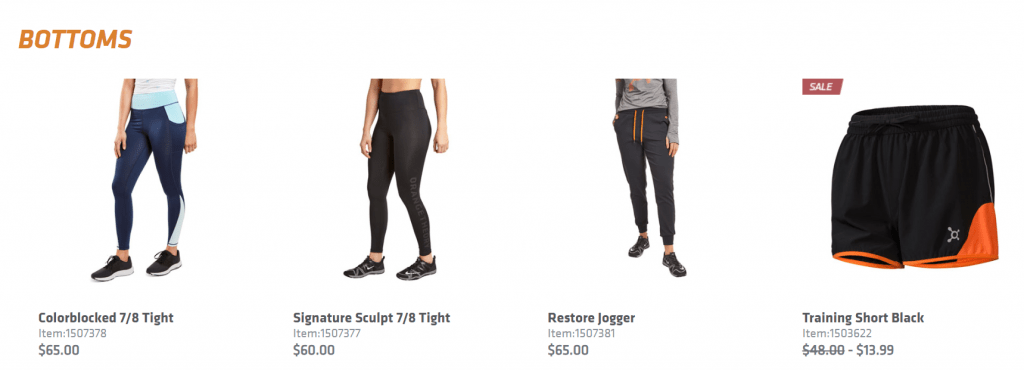
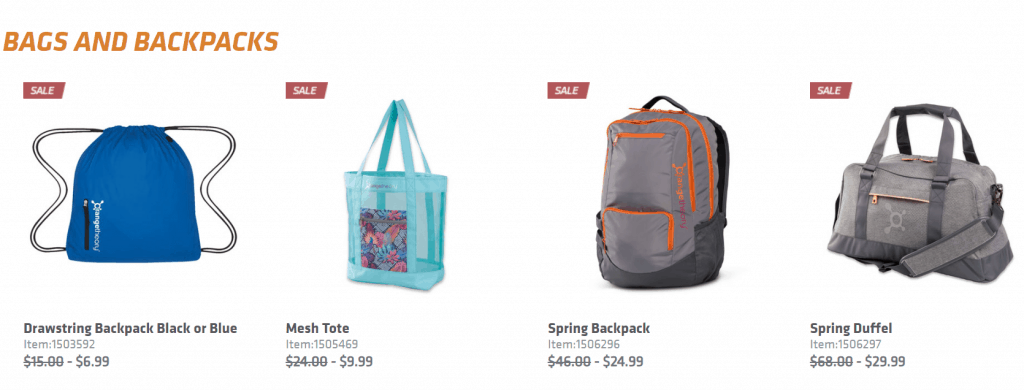
Like Orangtheory, many other fitness clubs benefited tremendously by selling their products online. However, their success can partially be attributed to their home court advantage.
Fitness clubs were already groomed with a client base through their members, advantaging them with brand familiarity in a new market. This sense of brand loyalty allowed them to seamlessly transition into digital sales without the typical obstacles encountered by other online fitness companies.
Enter: E-commerce Fitness Giants
While gyms succeeded online with a foot in the door, they were instrumental in paving the way for future companies by normalizing the concept of buying reliable fitness products online.
Stemming from this traction, here’s how these companies created a brand new thriving market out of thin air:
Audience: Reach Global, Target Youth
Easily the most significant advantage lies in their nature; internet-based retailers are not confined by a location. Since interest in fitness is a global phenomenon, these companies took advantage of broad marketing initiatives catered to a worldwide demographic as opposed to a localized one. This speaks to the larger trend exhibited by most of the top online companies: go international or go home.
In addition to social media based marketing strategy (discussed below), many successful companies have achieved this by hiring remote influencers or representatives to spread their brand name to new places. They have also invested in additional offices and warehouses overseas to expedite shipping in popular areas.
Since the fitness craze and its social media subculture is dominated by younger generations, these companies focused their marketing initiatives on the millennial generation or younger. This demographic continues to comprise the majority of sales for most apparel and nutrition companies.
Influencer Marketing
The power of the modern day influencer cannot be understated. The 2019 definition of celebrity has been immensely shaped by social media, making influencers as well-known and successful as others who reached stardom through more traditional routes.

Influencers are a force to be reckoned with across social networks. They separate themselves from other celebrities in that they did not achieve their success based on talent alone, their followers personally identify with them on a much deeper level. Therefore, fitness companies that employ influencers receive the overwhelming benefit of their loyal following base within their niche field, which is much a stronger call to action.
Since clients are not able to “try before they buy”, so to speak, the advocacy from a famed fitness influencer can be some of the most powerful marketing tactics in your arsenal. With most influencers doubling as famous YouTubers, they can use the platform to bridge the online gap between products and consumers through detailed product review videos.
Influencer Marketing Pioneer: Gymshark
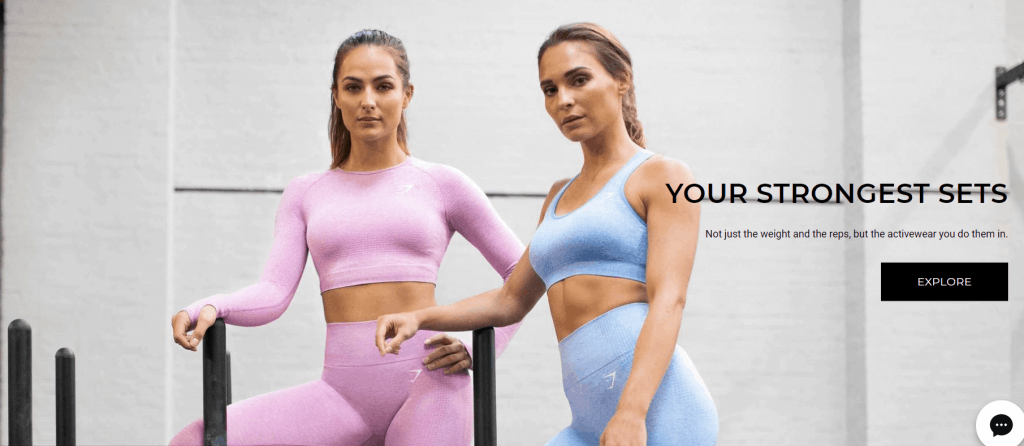
The undisputed champion and founding father of utilizing influencer marketing is Gymshark, which is widely recognized as a leading e-commerce company, reaching over £100 million in revenue ($126 million) in six years and serving over 1.2 million customers in only six years.
From its early days, Gymshark carefully selected famed bodybuilders and fitness celebrities like Steve Cook, Ryan Terry, Nikki Blacketter, and Whitney Simmons to represent their brand’s mission statement: “Be All That You Imagined You Could Be. Be A Visionary.”
Not only do their combined multi-million following brings great exposure and brand notoriety, but Gymshark has successfully used these like-minded and inspiring influencers to build the “Gymshark family”, which are now the leaders of the multi-million worldwide Gymshark digital community.
Influencers turned Entrepreneurs
In addition to collaborating with other brands, many influencers have personally contributed to this e-commerce boom under their own self-branded initiatives. They have achieved this by launching their own individual online ventures to their followings, primarily with products like work out guides or exercise accessories like resistance bands, lifting straps, or ankle weights.

Most famously, Australian influencer Kayla Itsines, used her platform to first produce her famed Bikini Body Guide Ebook, which has been downloaded over one million times. From there, she developed her own subscription-based mobile app called Sweat, which now has 100 million active users per month and is projected to bring in $77 million USD in revenue by the end of 2019.
Brand Identity through Social Media
An e-commerce brand will not survive without exceptionally strong social media profiles to back it up. The internet era has changed how consumers interact with companies and their services: consumers want to support brands that not only create great products, but that also resonates with them personally.
While a crucial aspect of this is using sponsored athletes who fit your brand’s image, equally important is the content and network developed through your social media platforms. Most fitness e-commerce companies have prioritized Instagram as its most important channel since the platform incurs the highest user engagement.
Keeping all social media platforms, especially Instagram, active and flooded with engaging content is essential for cultivating this interactive community. Posts should be in line with the brand’s aesthetic and mission; however, the content underlying them needs to provide some type of value for their intended audience. Every post should echo consistency across the board, from color schemes, to fonts, to tone, to message.

Finding this balance can be tricky: blasting socials with sales information is important to inform your audience of new products and release dates, but nobody likes getting constant sales pitches.
Therefore diversifying content is imperative to keep your following engaged in your brand. Brands can also benefit from creating more localized social media accounts aimed at a particular subgroup of their following.
For example, Women’s Best, one of the world’s leading nutrition and supplement companies created a series of targeted regional Instagram accounts in addition to their main profile. They also developed an Instagram specifically for how their nutrition products can be repurposed for new recipes, like how to use protein powder as flour for mouth-watering desserts.
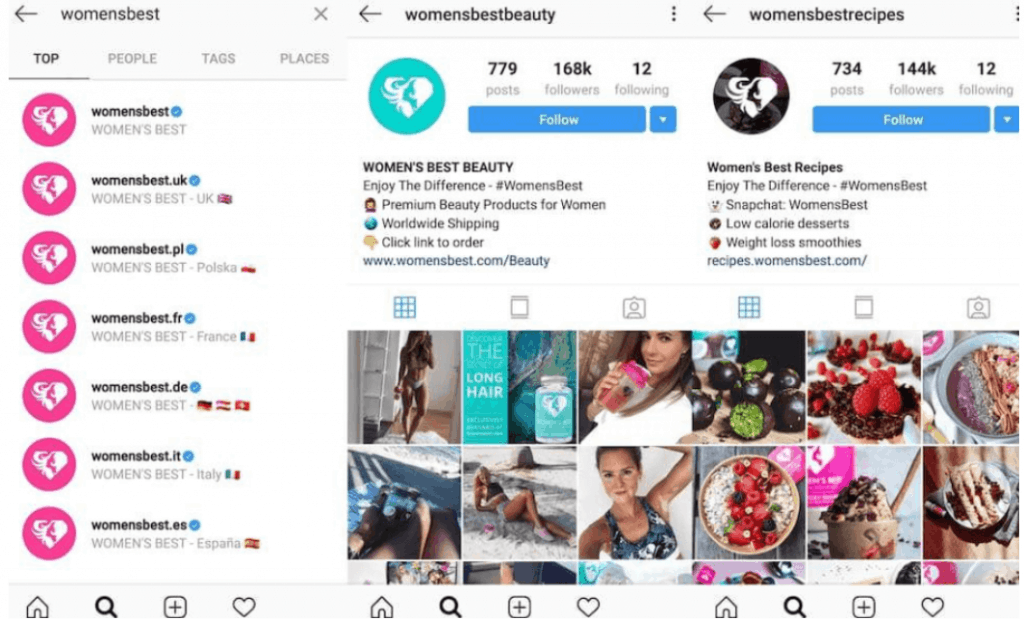
Gymshark has segmented their Instagram into three respective profiles: Gymshark, GymsharkWomen, and GymsharkTrain, amassing 5.5 million followers total.
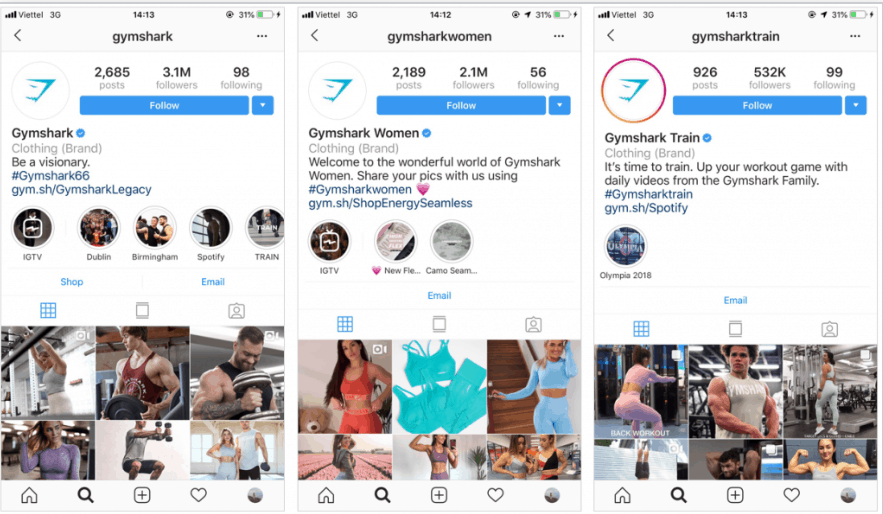
The slight diversification enables the brand to post more audience specific content while also encouraging its following to tag them in their own pictures and videos sporting their apparel.
YouTube
With YouTube reaching over 30 million active viewers per day, the importance of this platform to market an e-commerce brand is incalculable. Metrics indicate that the most popular and highest viewed videos on YouTube are product/service review videos. In fact, a study conducted by Think With Google revealed that 55% of consumers watch an online product review video before making their own purchase.
While YouTube videos from big-name sponsored athletes or influencers are great for exposure, they will clearly be taken with a grain of salt since viewers know they are being paid to do so. Therefore, review videos from lesser known YouTubers or non-affiliates can be even more important for blossoming digital companies.
Since many YouTubers build their brand and internet persona on honest and authentic reviews, a strong endorsement of your product can achieve volumes in terms of sales and customer acquisition. Likewise, these videos give your potential customers an in-depth analysis of all important information relevant to the product.
Alphalete, now a multi-million dollar company, staked its reputation by sending its athletic apparel line to fitness YouTubers with varying subscriber counts, who were known for their brutally honest reviews.
Although the YouTubers received the clothes for free, they were not paid later for the review itself. This gamble proved effective when rave review videos spiked sales, bringing newfound notoriety to Alphalete’s brand that pushed their expansion to what it is today.
Incentives
One of the most popular tactics online companies use to drive up sales is attractive pricing incentives.
Ecommerce companies can capitalize off sales and discounts more easily then brick and mortar just based off accessibility. If I hear a store is having a sale, I still physically have to make time to be able to go.
However, flash online sales that I can access with the click of a button are likely to draw in far more interest, and more importantly, action. Direct advertising these sales on Instagram or Facebook also takes users directly to sales portals without distraction.
In fact, many popular eCommerce companies align their business model with the power of the flash sale notifications in mind. They do so by leaving their regular prices at a higher mark-up, but offer some type of discount promotion or free shipping three weeks out of the month.
Another common strategy is to offer affiliate links where customers can use discount codes distributed by their sponsored athletes or influencers. The logic behind this being that customers may feel incentivized to make purchases if they know a small percentage could benefit their favorite fitness social media celebrity on top of a discount.
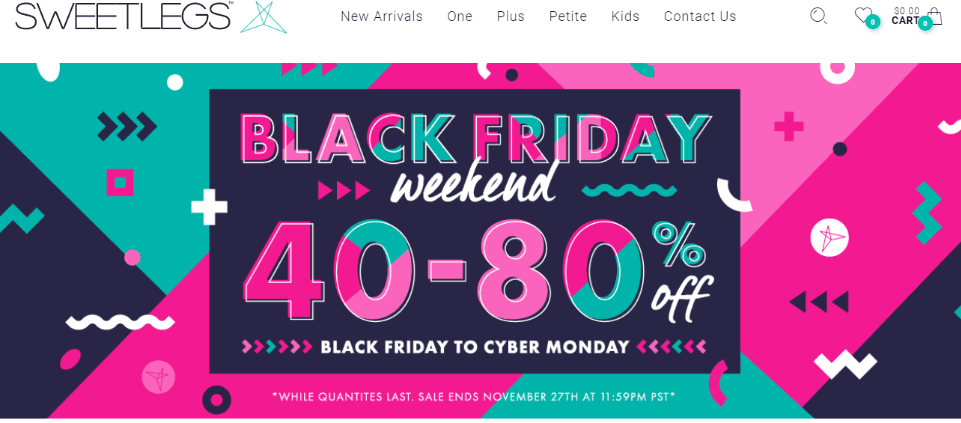
Similarly, by building hype and anticipation around their biggest sales of the year on social media, these companies will bring in a massive influx in customers.
Closing Thoughts
The ultimate success and growing number of fitness companies entering the e-commerce realm every day evidences the prosperity of this new market. A commonality between the major e-commerce fitness companies is that their products live up to their promise. The quality is exceptional enough to entice first-time buyers and keep them coming back.
Regardless of differing business models, products, or services, these prominent companies as well as the overall marketplace have adapted to digital transformation through innovating customer experience with convenience to deliver a truly seamless relationship between business and customer.